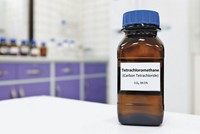Advertisement
Grab your lab coat. Let's get started
Welcome!
Welcome!
Create an account below to get 6 C&EN articles per month, receive newsletters and more - all free.
It seems this is your first time logging in online. Please enter the following information to continue.
As an ACS member you automatically get access to this site. All we need is few more details to create your reading experience.
Not you? Sign in with a different account.
Not you? Sign in with a different account.
ERROR 1
ERROR 1
ERROR 2
ERROR 2
ERROR 2
ERROR 2
ERROR 2
Password and Confirm password must match.
If you have an ACS member number, please enter it here so we can link this account to your membership. (optional)
ERROR 2
ACS values your privacy. By submitting your information, you are gaining access to C&EN and subscribing to our weekly newsletter. We use the information you provide to make your reading experience better, and we will never sell your data to third party members.
Chemical Regulation
EPA proposes to ban most uses of methylene chloride due to health risks
The agency aims to rapidly phase down the manufacture, processing, and distribution of methylene chloride, with some exceptions
by Krystal Vasquez
April 21, 2023

The US Environmental Protection Agency has proposed a ban for all consumer and most industrial and commercial uses of methylene chloride. The new proposal follows a risk assessment finalized by the agency in November 2022, which found that exposure to the solvent can lead to adverse health effects such as liver disease and cancer.
Methylene chloride can be found in a variety of products, including adhesives, paint strippers, and degreasers. It is also widely used as a raw material for producing other chemicals. The EPA estimates that over 900,000 workers and 15 million consumers are regularly exposed to methylene chloride.
The compound is the second to be evaluated under the revised Toxic Substances Control Act (TSCA), which mandates the EPA to review the safety of new and existing commercial chemicals. The agency aims to phase out the manufacture, processing, and distribution of methylene chloride within 15 months.
Some uses of methylene chloride are exempt from this ban, including its use as a chemical reagent. For example, it will continue to be used in the production of the refrigerant hydrofluorocarbon-32, which was developed to replace alternatives with higher global warming and/or ozone-depleting potentials.
“There are also critical military and federal uses of methylene chloride that we believe can continue safely,” Michal Freedhoff, the assistant administrator for the EPA’s office of chemical safety and pollution prevention, said in a press briefing prior to the announcement. In all these cases, “EPA would require protective worker safety measures to be implemented.”
Several environmental groups applaud the new proposal. However, they also share concerns about the rule’s exemptions, which would allow methylene chloride to continue to be used for at least the next decade.
Maria Doa, senior director for chemicals policy at the Environmental Defense Fund, says this prolonged use would continue to pose a risk to communities living near exempt facilities. Doa says the EPA should either shorten the exemption time or introduce additional restrictions that would limit the release of methylene chloride from these facilities.
Meanwhile, the American Chemistry Council, a trade group representing chemical manufacturers, says the proposed regulation could have supply chain impacts. In a statement, the group says the rapid phase down would cut methylene chloride production by more than half. This reduction could have “ripple effects” on other industries, such as pharmaceuticals, especially if “manufacturers decide to cease production entirely,” the group says.
Methylene chloride is the second of 10 chemicals that the EPA plans to evaluate for possible risks to human health and the environment. The first was asbestos. According to Freedhoff, regulations for the third, perchloroethylene, will likely look similar to the new rule for methylene chloride and include a mix of prohibitions and stronger worker protections.





Join the conversation
Contact the reporter
Submit a Letter to the Editor for publication
Engage with us on Twitter